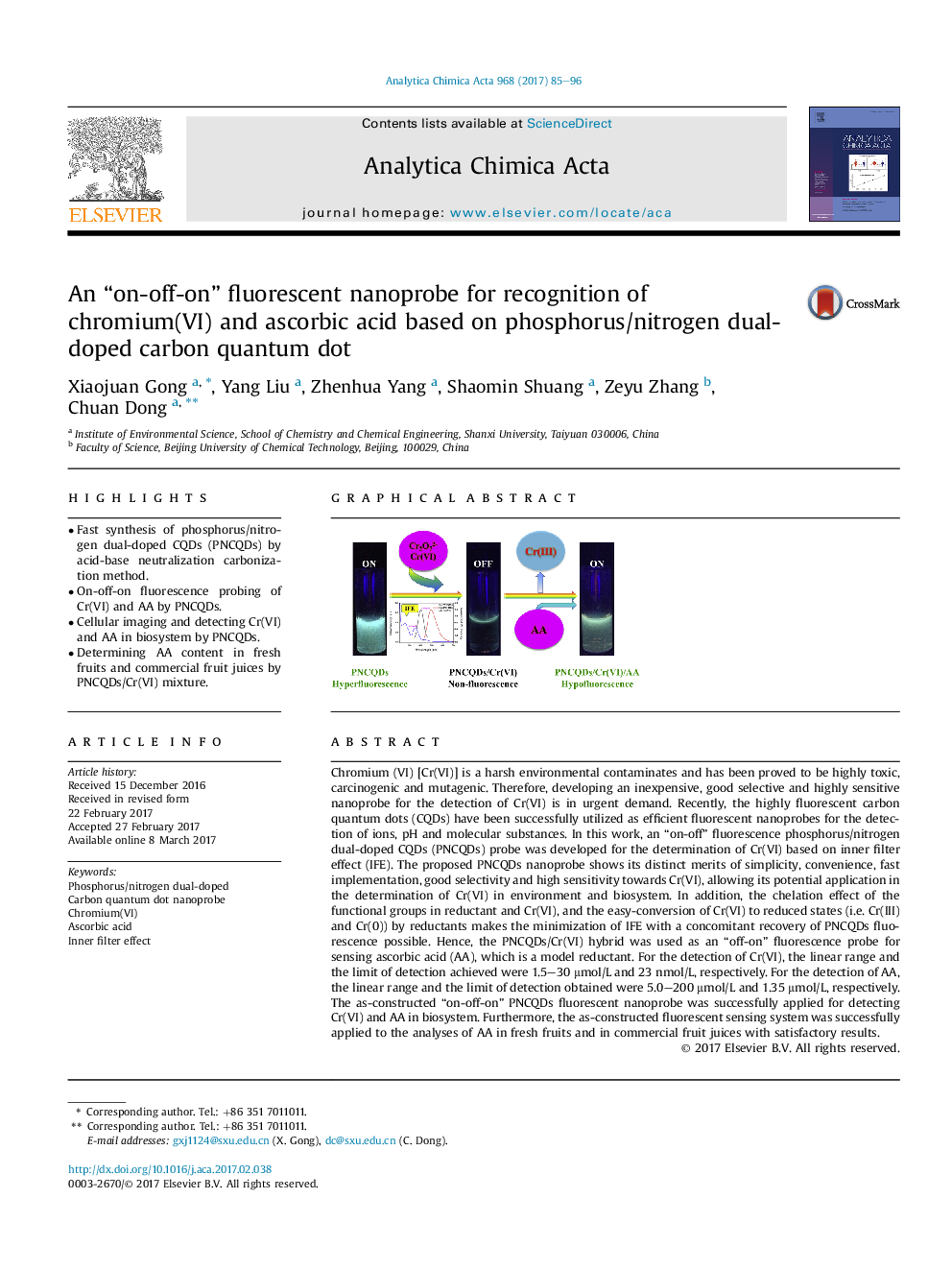| کد مقاله | کد نشریه | سال انتشار | مقاله انگلیسی | نسخه تمام متن |
|---|---|---|---|---|
| 5130892 | 1490864 | 2017 | 12 صفحه PDF | دانلود رایگان |

• Fast synthesis of phosphorus/nitrogen dual-doped CQDs (PNCQDs) by acid-base neutralization carbonization method.
• On-off-on fluorescence probing of Cr(VI) and AA by PNCQDs.
• Cellular imaging and detecting Cr(VI) and AA in biosystem by PNCQDs.
• Determining AA content in fresh fruits and commercial fruit juices by PNCQDs/Cr(VI) mixture.
Chromium (VI) [Cr(VI)] is a harsh environmental contaminates and has been proved to be highly toxic, carcinogenic and mutagenic. Therefore, developing an inexpensive, good selective and highly sensitive nanoprobe for the detection of Cr(VI) is in urgent demand. Recently, the highly fluorescent carbon quantum dots (CQDs) have been successfully utilized as efficient fluorescent nanoprobes for the detection of ions, pH and molecular substances. In this work, an “on-off” fluorescence phosphorus/nitrogen dual-doped CQDs (PNCQDs) probe was developed for the determination of Cr(VI) based on inner filter effect (IFE). The proposed PNCQDs nanoprobe shows its distinct merits of simplicity, convenience, fast implementation, good selectivity and high sensitivity towards Cr(VI), allowing its potential application in the determination of Cr(VI) in environment and biosystem. In addition, the chelation effect of the functional groups in reductant and Cr(VI), and the easy-conversion of Cr(VI) to reduced states (i.e. Cr(III) and Cr(0)) by reductants makes the minimization of IFE with a concomitant recovery of PNCQDs fluorescence possible. Hence, the PNCQDs/Cr(VI) hybrid was used as an “off-on” fluorescence probe for sensing ascorbic acid (AA), which is a model reductant. For the detection of Cr(VI), the linear range and the limit of detection achieved were 1.5–30 μmol/L and 23 nmol/L, respectively. For the detection of AA, the linear range and the limit of detection obtained were 5.0–200 μmol/L and 1.35 μmol/L, respectively. The as-constructed “on-off-on” PNCQDs fluorescent nanoprobe was successfully applied for detecting Cr(VI) and AA in biosystem. Furthermore, the as-constructed fluorescent sensing system was successfully applied to the analyses of AA in fresh fruits and in commercial fruit juices with satisfactory results.
Figure optionsDownload high-quality image (246 K)Download as PowerPoint slide
Journal: Analytica Chimica Acta - Volume 968, 22 May 2017, Pages 85–96